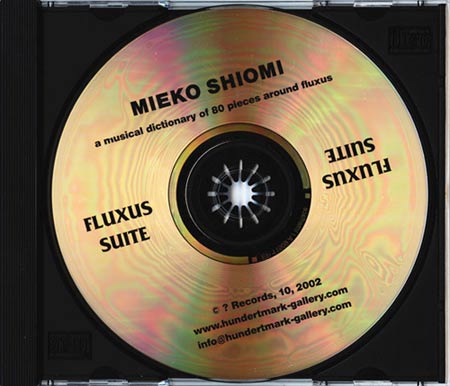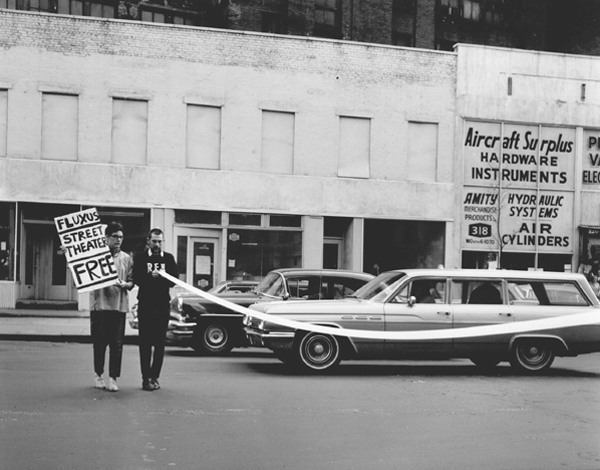guardian.co.uk - Artist of the week 26: George Maciunas
The founder of avant garde collective Fluxus, Macuinas was best known for insane and inventive ideas that were key to influencing one of the most important art movements of the last century, writes Jessica Lack
Jessica Lack guardian.co.uk, Wednesday 28 January 2009 14.47 GMT
Article history

George Maciunas performing for self-exposing camera, New York in 1966. Photograph: Gilbert and Lila Silverman Fluxus Collection Foundation, Detroit/George Maciunas
George Maciunas was the Lithuanian-born leader of Fluxus, an international avantgarde collective formed in 1960 that only really became respectable after its irascible founder died from cancer in 1978. Maciunas was a charming despot who herded a group of disparate artists into one of the most influential movements of the mid-20th century. His ambition was to create a world free of art, and replace it with Fluxus, a form of creativity so uncomplicated it could be realised anywhere and anyhow. Maciunas said the purpose of the movement was to "promote a revolutionary flood and tide in art, promote living art, anti-art".
George Macunias
The Dream of Fluxus
The Baltic, Newcastle
---------------------
Starts 25/11/08 Until 15/02/09 Details:
+44 (0)191 478 1810 Venue website
When asked to define exactly what Fluxus was, Maciunas would often respond by playing samples of dogs barking or geese honking, rooting the movement firmly in the absurd tradition that had grown up out of dadaism and surrealism. Fluxus activities ranged from public performances and street theatre, to lo-fi sculptures. Maciunas was anti-ownership and refused to allow any of the Fluxus works to be signed, making it difficult for dealers to value their worth. He was also instrumental in transforming Soho from a run-down, unfashionable district of New York city into an artists colony; when a warehouse shut, Maciunas moved in, using it as an art space for his collegues and friends. Those enticed by the movement included Joseph Beuys, who was drawn to the group because of its inclusive philosophy - echoing as it did, Beuys's own beliefs that everyone was an artist. Yoko Ono was also a member and her bed-in with John Lennon is a classic example of Fluxus performance.
Although Maciunas is possibly best known for a series of staged performances, one of which included systematically destroying a piano, he also made souvenir boxes. These were tailor made for individuals and contained artefacts and information relating to the year of their birth. Sometimes these boxes could be positively macabre. When he made one for fellow Fluxus member George Brecht (who claimed to be born in 1250), Macunias trawled the local hospitals for a human ear to be included as an homage to Genghis Khan, who notoriously counted the victims of his bloody battle in 1250 by cutting off their ears.
Why we like him? Difficult, there are so many insane ideas to choose from. Probably the Flux-Olympiad, in which Maciunas proposed to stage a three-day sports event featuring soccer games on stilts, slow-speed bicycle races and balloon shot put. Although the artist died before the idea could be conceived, Tate Modern staged the event last year.
Spared no expense: In 1964, Maciunas opened a shop on Canal street selling Fluxus multiples for $1, but made no sales in the first year. Ironically, a recent sketch by Beuys went for £20,000.
Red October: His mother, a former Russian dancer, became the private secretary of Russian prime minister Aleksandr Kerenskyafter he emigrated to New York in 1940.
Where can I see him? George Maciunas, The Dream of Fluxus is on at The Baltic, Newcastle until 15 February.
Labels: George Maciunas


















